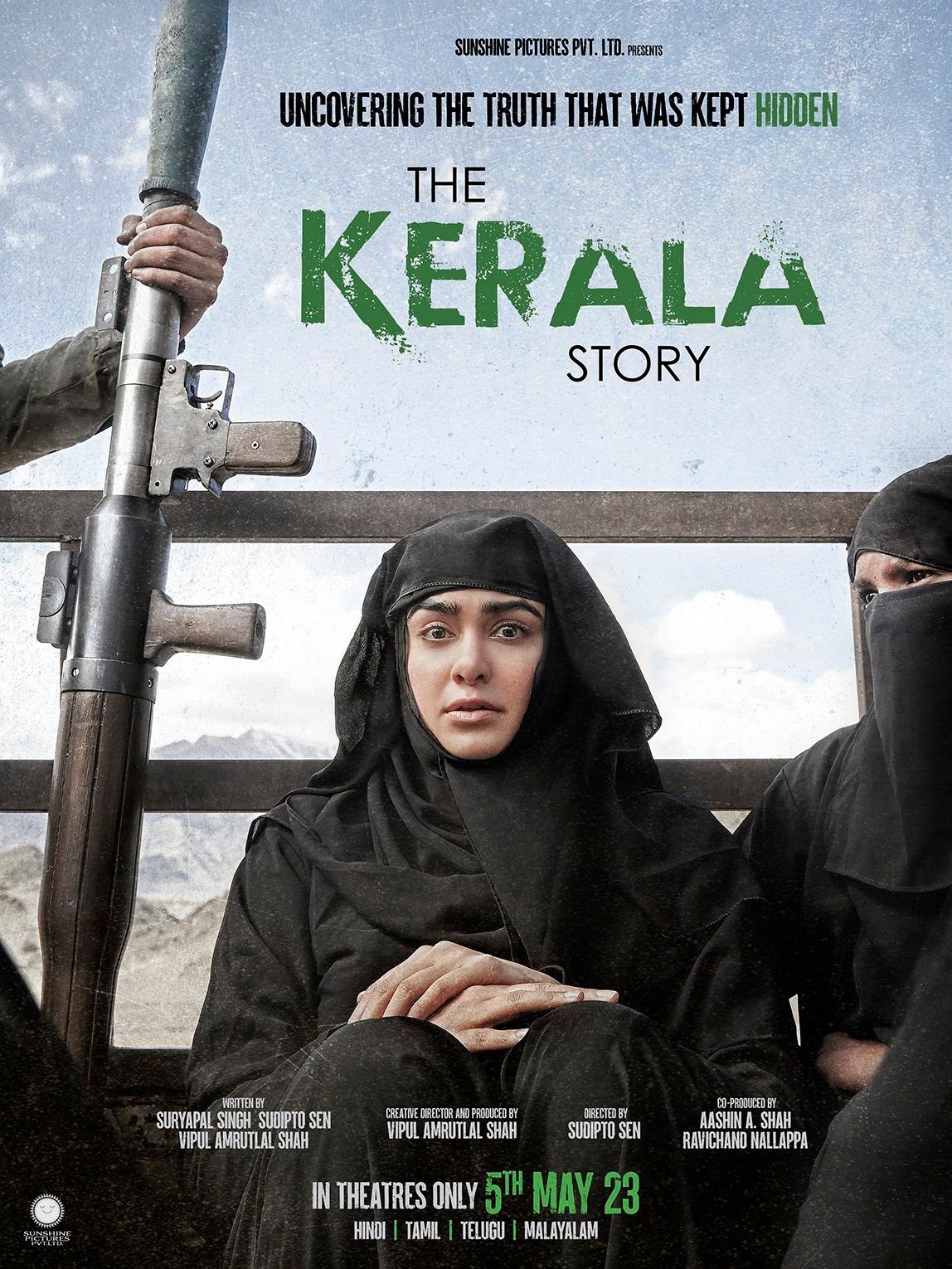Film Review – The Kerala Files


For years and years one wondered why India hardly had any films which documented starkly and truely some watershed events which happened in our country. Even those films or TV serials which showed the horrors of Partition, always had “bhaichaara” sown into the story. It was as if the truth was shown without any remorse, a community would feel slighted or insulted and would hate Hindus for it. The fact is that when any historic truth is shown in a factual manner with no room for personal conditioning showing up, one can hope to see changes in society for the better. This is exactly what “The Kerala Story” does. It puts out the stark truth there for posterity, with the hope that people will realize that it is not just the Hindu girls who are brainwashed and exploited, but the Muslim youngsters too. Just like how films on Nazis made civil society realize the horrors of the concentration camps and brought about the end of the same, one hopes that “The Kerala Story” opens the eyes of Indians to the horrors of brainwashing by radical Islam, and ends it atleast in India.
The story is about 4 young girls who join up for a course in Nursing in a reputed college in North Kerala. One of them, the heroine Adah Sharma (Shalini), comes from a traditional Hindu family; another (Geetanjali) comes from a Hindu family of Communists; the third (Nimah) comes from a Christian family and the fourth (Asifa) is a Hijabi Muslim. She is the one who is given the onerous task of brainwashing her roommates into converting to Islam and for this purpose she uses her young, male “relatives”, her community members and elders and the verses in the Koran. She thinks she is doing a pious duty as mentioned in the Koran and not for once does her conscience chide her into realizing that by doing so, she is destroying the lives of the other three girls who thought of her as a friend. Even the male youngsters who join in to destroy the lives of these innocent girls have no remorse or guilt while ravaging the bodies of the girls, because they feel that it is permitted, nay blessed, in the Koran and will get them a direct entry into Jannat, the imaginary heaven. That they have already pushed their own humanity and conscience into Dozzakh (hellfires) by being a participant in such a horrific agenda, escapes their brainwashed personalities.
To my mind, one of the most important scenes in the film is when the hijabi Principal of the Nursing College states casually that the anti-national, anti-Hindu graffiti on the walls of the college have been made by outsiders and are not approved by the college authorities. This is exactly how passive Islam supports radical Islam – by pretending to disapprove of radical Islam, while not stopping them from committing such acts filled with anti-national sentiments, hatred for other religions and so on.
Shalini alias Fatima’s journey from being a carefree, innocent student to becoming a recruit for ISIS to desperately wanting to escape that life with her infant daughter is very well enacted by Adah Sharma. Siddhi Idnani as Geetu who tries to boldly let go of her past, till it threatens to ruin the respect her parents have in society, makes the viewer take the roller-coaster ride as well. Yogita Bihani (Nimah) and Sonia Balani (Asifa) have done justice to their roles. But the true hero of the film is the screenplay and cinematography. The unfolding of the scenes and the locales does wonders to the story. The haunting songs in the background make one listen intently to the soulful lyrics. Sudipto Sen has created a masterpiece and deserves a lot of applause.
The Kerala Story definitely deserves wide viewership. The regular sloganeering against the film just deserves contempt because the film is not about Kerala or just Love Jihad. It is about Humanity and how we have destroyed it by falling into a trap set by inhuman forces calling people who don’t bow down to their God as Infidels or Kafirs.
The Kerala Story releasing on 5th May 2023 in theatres
Produced by : Vipul Shah
Directed by : Sudipto Sen
DISCLAIMER: The author is solely responsible for the views expressed in this article. The author carries the responsibility for citing and/or licensing of images utilized within the text.
